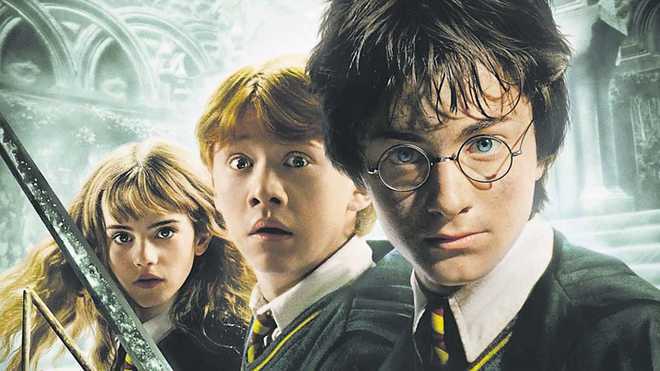Genetics behind Harry Potter''s magical powers decoded
Washington
Scientists have explained the genetics behind the magical powers of characters in J K Rowling's popular Harry Potter franchise, in an unusual crash-course on wizarding DNA.
In the world of Harry Potter, magical ability is said to run in the family. Witches and wizards typically have parents who have magical abilities.
However, Hermione Granger was born to a pair of Muggles — people without magical powers, and Harry's roommate, Seamus Finnigan, was the son of a Muggle father and an Irish witch.
A witch and wizard couple may also produce a non-magical person — known as a squib — such as the Argus Filch, caretaker at the Hogwarts School of Witchcraft and Wizardry.
During a talk at Future Con, a three-day science, technology and entertainment festival in the US, assistant professor Eric Spana from Duke University explained some of the genetic factors behind a person's wizarding abilities.
Hagrid, the half-giant groundskeeper at Hogwarts, could perform magic. Giants have no magical ability, and Hagrid was born to a giant mother and a wizard father.
For him to be born a wizard with only one copy of the wizard gene in his DNA, magical ability would have to be a dominant trait, Spana said.
This example seems to hint that magic is linked to the Y chromosome, 'Livescience' reported.
However, Seamus Finnigan had a Muggle father and a witch mother, which suggests it can not be the Y chromosome that carries the gene since females have two X chromosomes, while males have one X and one Y chromosome.
That would make wizarding ability an autosome — a trait that is not linked to sex characteristics, Spana said.
"It's an autosomal, dominant trait," he concluded.
Hermione is an example of a "de novo" mutation that appears in a lineage for the first time, due to a mutation in the egg or sperm, or within the embryo itself.
A random mutation could also explain how a non-magical squib could be born to two magical parents, he added. — PTI









